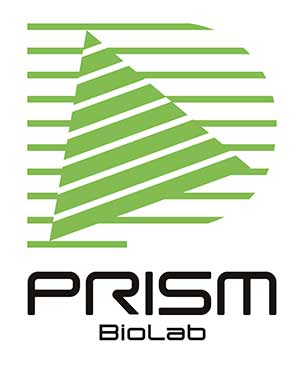Published on: December 27, 2023
A small molecule designed for the mimicry of a part of a biomolecule is playing a key role in drug discovery and development. PepMetic® molecules are the mimetics of α-helices and β-turns in a general sense, Mimicry of another well-known secondary structure of proteins, β-strands, would also have a possibility of controlling PPIs.
Here is a curious series of papers involving synthesis and characterization of stretching peptides. The first one is from Dawson group in Scripps Research Institute on ChemRxiv as a Working Paper in Oct. 2022. 1) The full article was published in ACS central science, focusing on the b-strand mimicking nature of their molecules. 2) This research was highlighted in the same journal as a potential PPI targeting tool. 3)
The authors’ strategy is close to the concept of stapled peptides. They utilized a propargyl glycine (Prg), alanine, and a Prg or a propargyl serine (Prs) sequence with a peptide backbone. The terminal alkynes of the propargyl groups were covalently bonded by Glaser reaction to form the diyne. This reaction enabled [i, i+2] diyne-braced peptide to mimic the β-strand. The dihedral angles were examined by DFT calculation and NMR coupling analyses. The results indicated these molecules reasonably mimics the β-strands in terms of the Prg-Ala-Prg/Prs region.
Mimicry of β-strands has long been investigated so far by the use of small molecules.4),5) and peptide backbones.6),7) The Dawson paper is significant and distinct in three aspects from others.
First, this research revealed the useful and general concept for locking the conformation of peptides, which they call “stretching peptides”. Throwing a novel idea by a simple name would make it widely recognized by the people in the same field. In terms of nomenclature, the authors call their molecules “Alkynomycin Compounds” and tested their antimicrobial activities. Simple naming of their molecules by the nomenclature of chemists’ vocabulary is something we need to learn from their research presentation.
Secondly, the authors smartly integrated recent and legacy researches to give birth to alkynomycins. The idea to incorporate diyne was derived from the natural presence of arylomycins.8) Arylomycins are stapled by the phenolic radical oxidation of the tyrosine residues. The authors took the advantage of the antimicrobial activity of this class of peptides and mimicked them by diyne structure. Glaser coupling is a kind of legacy in name reactions in organic synthesis. Glaser coupling was reported in 1870.9) The beautiful combination of old and new knowledge called this research into being, but it should be noted that its value was enhanced by the rationalization utilizing X-ray crystallography and DFT calculation.
Thirdly, the authors solved the synthetic difficulty through this research. It is well known that hetero-Glaser coupling is difficult due to the presence of homocoupling. Even in the case of intramolecular Glaser reaction, the ring-strain of a macrocycle with a linear diyne hampers cyclization reaction in general. But the author enabled it by on-resin synthesis so that no homocoupling to proceed.
In terms of the applicability of “stretch peptides” especially of the alkynomycins, there need more search on the molecules of this class. Still, the authors opened up the opportunity to design and synthesis of conformationally restricted small molecules, potentially mimicking β-strands.
We really appreciate academia to push forward the basic science applicable for drug discovery like this research. PepMetics® as well as our research knowledge and data would help you the brand-new research progress. Please contact us to create a novelty through collaborative research.
1) https://chemrxiv.org/engage/chemrxiv/article-details/6340d4b1ea6a222cc30de824
2) https://doi.org/10.1021/acscentsci.3c00364
3) https://doi.org/10.1021/acscentsci.2c01462
4) https://doi.org/10.1021/ja963843s
5) https://doi.org/10.1016/S0968-0896(98)00225-9
6) https://doi.org/10.1021/jm010414i
7) https://doi.org/10.1039/C9CC08378B
8) https://doi.org/10.7164%2Fantibiotics.55.565
9) https://doi.org/10.1002%2Fcber.186900201183

